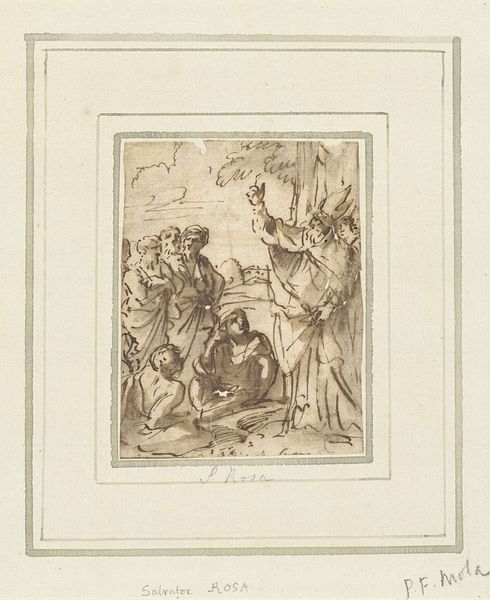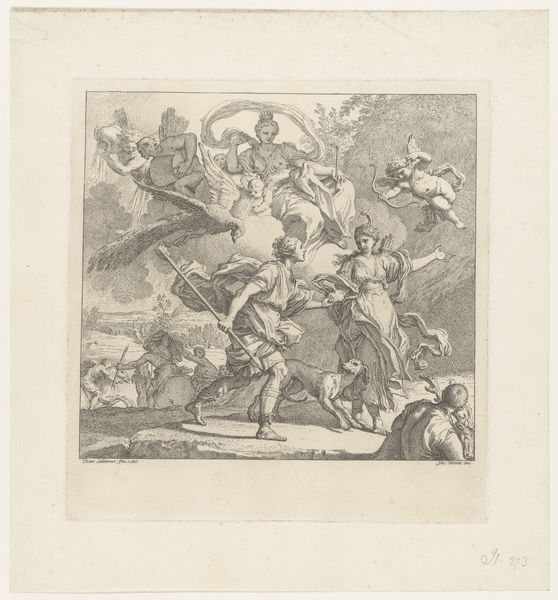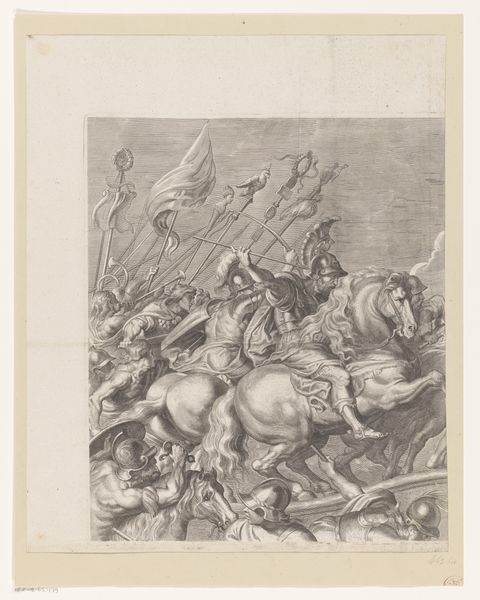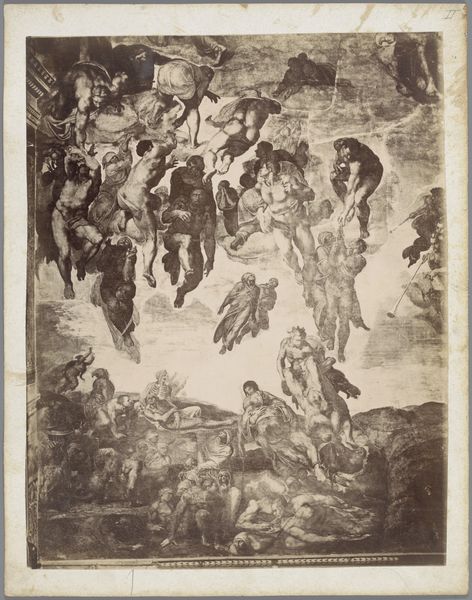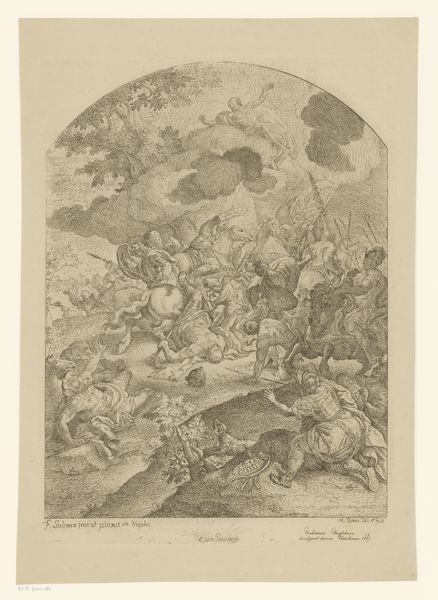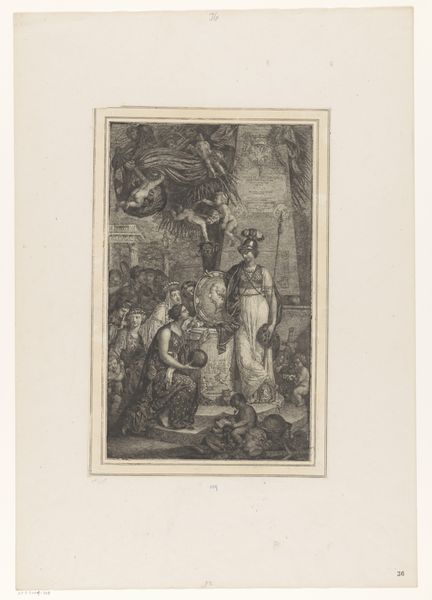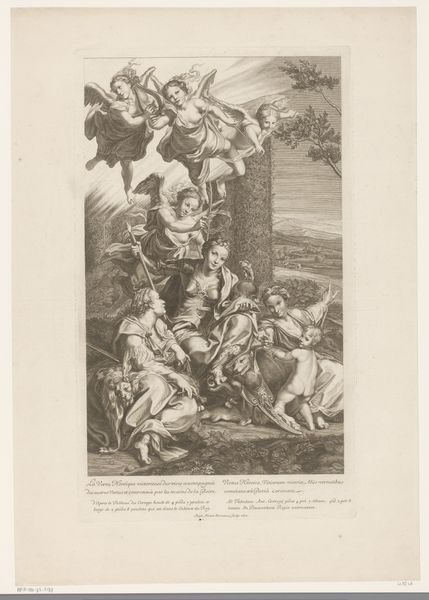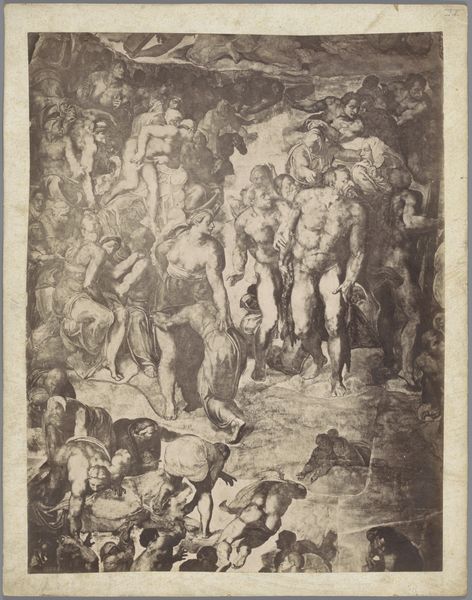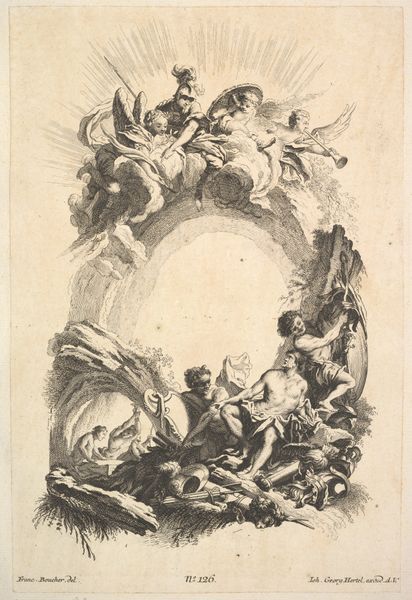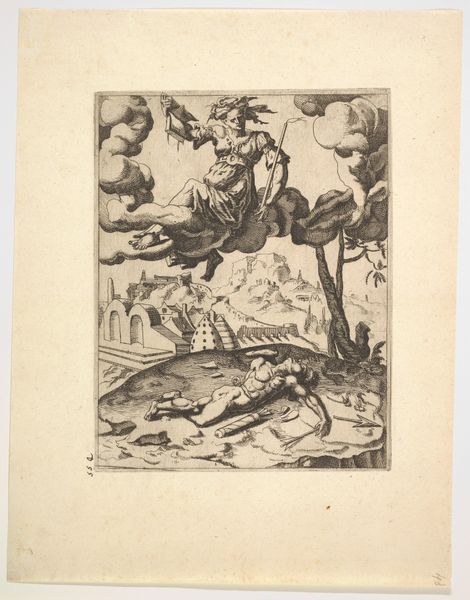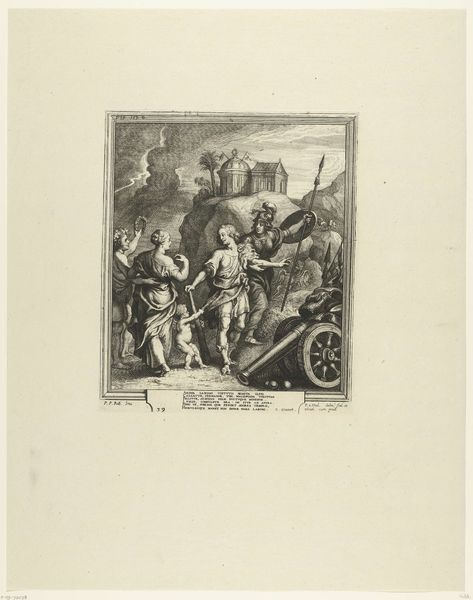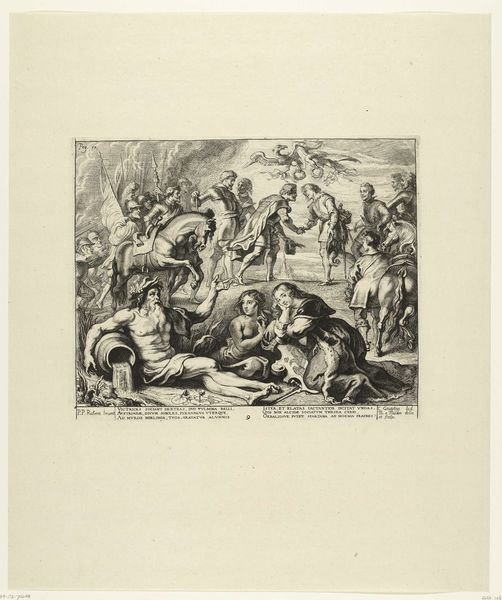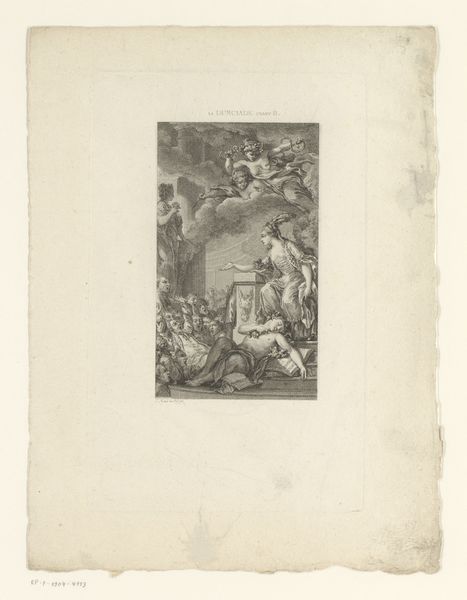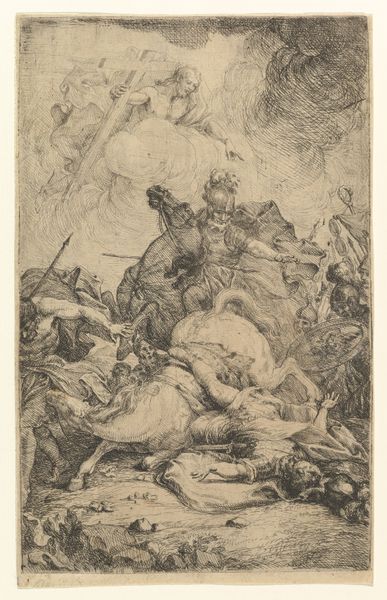
Ontwerp voor een behangselschildering of wandtapijt met Anchises en Aeneas 1659 - 1711
0:00
0:00
drawing, etching, paper, ink
#
drawing
#
narrative-art
#
baroque
#
etching
#
pencil sketch
#
etching
#
figuration
#
paper
#
ink
#
history-painting
#
watercolor
Dimensions: height 185 mm, width 172 mm
Copyright: Rijks Museum: Open Domain
Editor: This drawing by Augustinus Terwesten, made sometime between 1659 and 1711, is titled *Design for a painted wall hanging or tapestry with Anchises and Aeneas*. It's an ink and paper drawing currently held at the Rijksmuseum. It feels really dynamic but also a bit... chaotic, almost like a snapshot of a very involved theatrical scene. What do you see in it? Curator: I see a rich tapestry of inherited symbols. Consider the figures themselves: Anchises, the aged Trojan prince, is carried by his son Aeneas, fleeing the burning city. This immediately conjures images of duty, filial piety, and the weight of history carried on the shoulders of the next generation. Editor: I hadn’t thought of the ‘weight of history’ so literally! So the way Aeneas is carrying his father isn't just about physical burden, it's symbolic? Curator: Precisely. It speaks volumes. The burning Troy in the background isn't just a backdrop; it’s the end of an era, a catastrophic loss of cultural heritage. But observe how Terwesten doesn't focus on the flames. His figures move toward light, toward the promise of a new Rome. This echoes the baroque fascination with narrative and allegory, making direct allusions to the continuity of power. Does the medium--ink on paper--alter your interpretation? Editor: I suppose it does emphasize the tentative nature of it all, doesn't it? The 'design' aspect suggests that this story, as potent as it is, could still be shaped. Curator: A perceptive insight! Perhaps this emphasizes that history itself can be seen as fluid, waiting to be ‘colored in’ by successive generations. Editor: That’s a really insightful point. I came in thinking it was just a busy drawing, but now I see all the layers of meaning embedded in this single scene. Curator: It reveals cultural memory made visible through the language of symbols, doesn’t it? Always observe not just what is depicted but also *how* it's conveyed, because there, in that very "how", cultural understanding takes form.
Comments
No comments
Be the first to comment and join the conversation on the ultimate creative platform.
